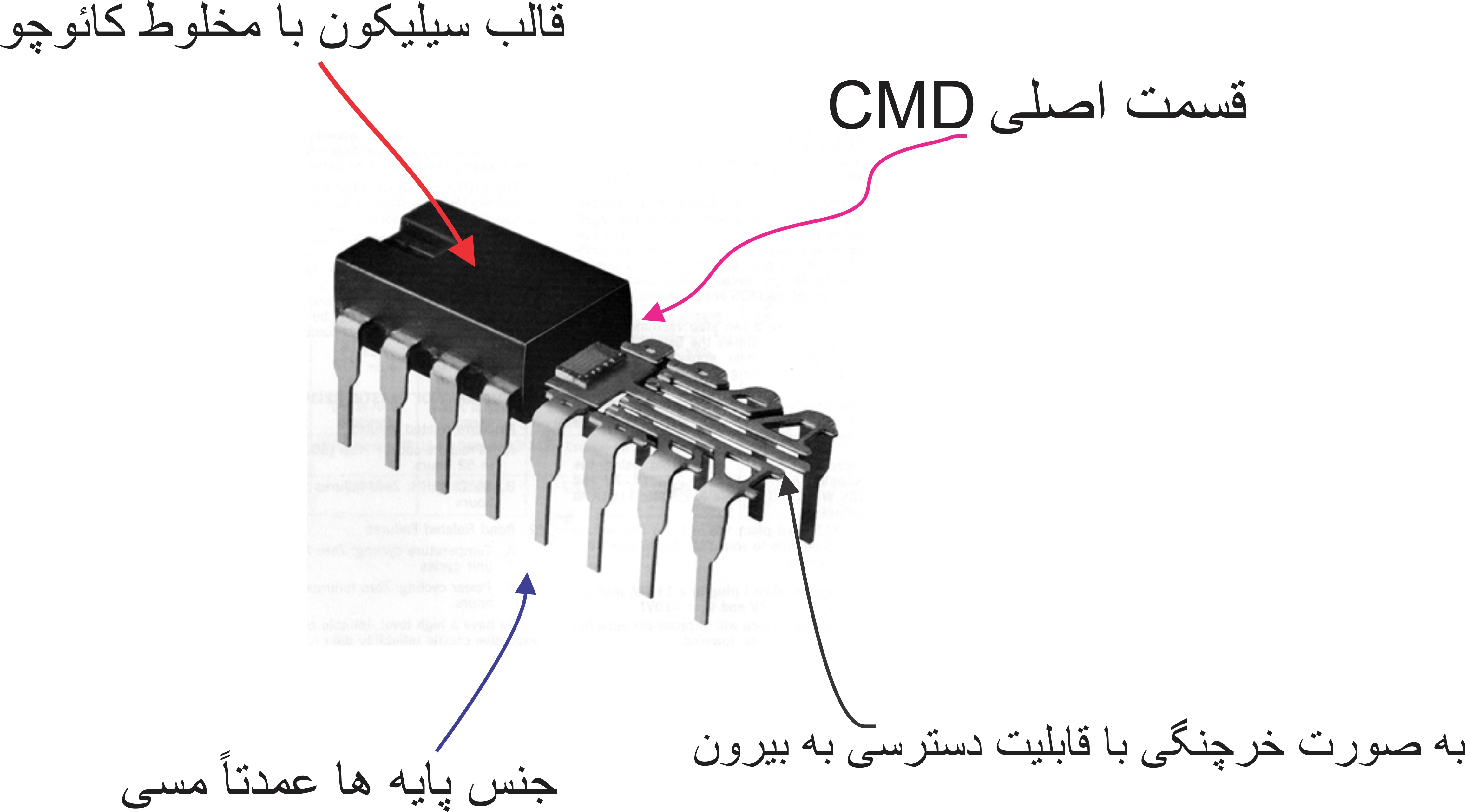CMD integrated circuits department (crab base)
Full introduction of the structure and internal structure of CMD complex circuits (crab base)
Researcher and author: Dr. ( Afshin Rashid)

Note: CMD or crab base ICs have bases outside the IC. These pins allow you to access the internal circuitry of the ic or CMD chip.
CMD ICs, like transistors, have their numbers directly printed on them. Sometimes, additional information such as manufacturer and IC manufacturer codes are written along with the original number. In CMD (crab base) chips and ICs, the functionality between pins does not happen arbitrarily or randomly, in fact, it is a circuit that is reduced and glued inside the IC, and the circuit is connected to different pins. This small circuit inside the crab base IC is made of a number of transistors, resistors and diodes .
The general structure of ic and CMD chips: silicon mold material with rubber mixture vulnerable to heat; The type of installation (assembly) of ic in the form of DIP installation; The materials of the bases are mainly copper and an array next to the IC in the form of a crab with the ability to access the outside;
CMD ICs can be recognized by the large number of pins in the circuit. To identify them, the best thing is to use the data sheet. The information sheet contains the electrical characteristics and ... of the IC and the application of the IC in the circuit. The main component of CMD ICs is a set of layers of semiconductor wafers, copper metal and other materials that are connected to transistors, resistors or other components on the circuit. A set of cuts forming these wafers is called a die.
All CMD (crab base) ICs are polar and all pins have unique functions in terms of location. This means there are few ways to determine the pins. To find the first pin in most crab based ICs, you can use the notch or a point on the edge of the IC.
Researcher and author: Dr. ( Afshin Rashid)
Specialized doctorate in nano-microelectronics





